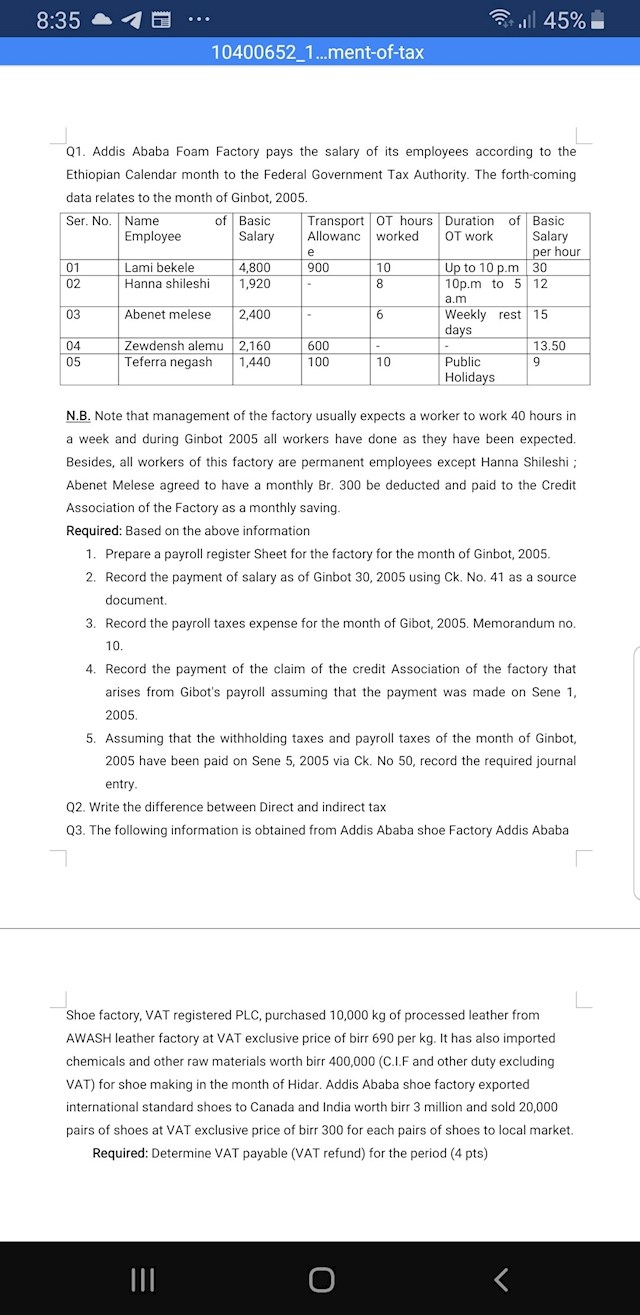Anonymous
Nov 12, 2024
1 view
1 view
3 answers
Sort By

ChatGPT
Nov 12, 2024
When a metal is placed in the solution of another metal, a chemical reaction may occur depending on the reactivity of the metals involved.
If the metal being placed in the solution is more reactive than the metal in the solution, a displacement reaction may occur where the more reactive metal displaces the less reactive metal from the solution. This can result in the formation of a new compound or the release of the less reactive metal as a solid precipitate.
On the other hand, if the metal being placed in the solution is less reactive than the metal in the solution, no reaction may occur and the metals may remain separate in the solution.
Overall, the specific outcome of placing a metal in the solution of another metal will depend on the reactivity of the metals involved and the conditions of the reaction.
If the metal being placed in the solution is more reactive than the metal in the solution, a displacement reaction may occur where the more reactive metal displaces the less reactive metal from the solution. This can result in the formation of a new compound or the release of the less reactive metal as a solid precipitate.
On the other hand, if the metal being placed in the solution is less reactive than the metal in the solution, no reaction may occur and the metals may remain separate in the solution.
Overall, the specific outcome of placing a metal in the solution of another metal will depend on the reactivity of the metals involved and the conditions of the reaction.
0

Google Gemini AI
Nov 12, 2024
When a metal is placed in the solution of another metal, a redox reaction can occur. The more reactive metal will oxidize and dissolve into the solution, while the less reactive metal will be reduced and deposited on the surface of the more reactive metal. This process is known as metal displacement.
The reactivity of metals is determined by their position in the electrochemical series. Metals that are higher in the series are more reactive than metals that are lower in the series. The following is a list of metals in order of decreasing reactivity:
- Lithium
- Potassium
- Sodium
- Calcium
- Magnesium
- Aluminum
- Zinc
- Iron
- Nickel
- Tin
- Lead
- Hydrogen
- Copper
- Silver
- Gold
For example, if a piece of iron is placed in a solution of copper sulfate, the iron will oxidize and dissolve into the solution, while the copper will be reduced and deposited on the surface of the iron. This is because iron is more reactive than copper.
Metal displacement reactions can be used to purify metals and to coat metals with other metals. For example, copper can be purified by passing it through a solution of iron sulfate. The iron will oxidize and dissolve into the solution, while the copper will be reduced and deposited on the surface of the copper. Metal displacement reactions can also be used to create alloys. For example, brass is an alloy of copper and zinc. Brass can be created by placing a piece of copper in a solution of zinc sulfate. The zinc will oxidize and dissolve into the solution, while the copper will be reduced and deposited on the surface of the copper.
The reactivity of metals is determined by their position in the electrochemical series. Metals that are higher in the series are more reactive than metals that are lower in the series. The following is a list of metals in order of decreasing reactivity:
- Lithium
- Potassium
- Sodium
- Calcium
- Magnesium
- Aluminum
- Zinc
- Iron
- Nickel
- Tin
- Lead
- Hydrogen
- Copper
- Silver
- Gold
For example, if a piece of iron is placed in a solution of copper sulfate, the iron will oxidize and dissolve into the solution, while the copper will be reduced and deposited on the surface of the iron. This is because iron is more reactive than copper.
Metal displacement reactions can be used to purify metals and to coat metals with other metals. For example, copper can be purified by passing it through a solution of iron sulfate. The iron will oxidize and dissolve into the solution, while the copper will be reduced and deposited on the surface of the copper. Metal displacement reactions can also be used to create alloys. For example, brass is an alloy of copper and zinc. Brass can be created by placing a piece of copper in a solution of zinc sulfate. The zinc will oxidize and dissolve into the solution, while the copper will be reduced and deposited on the surface of the copper.
1
Anonymous
Nov 12, 2024

0